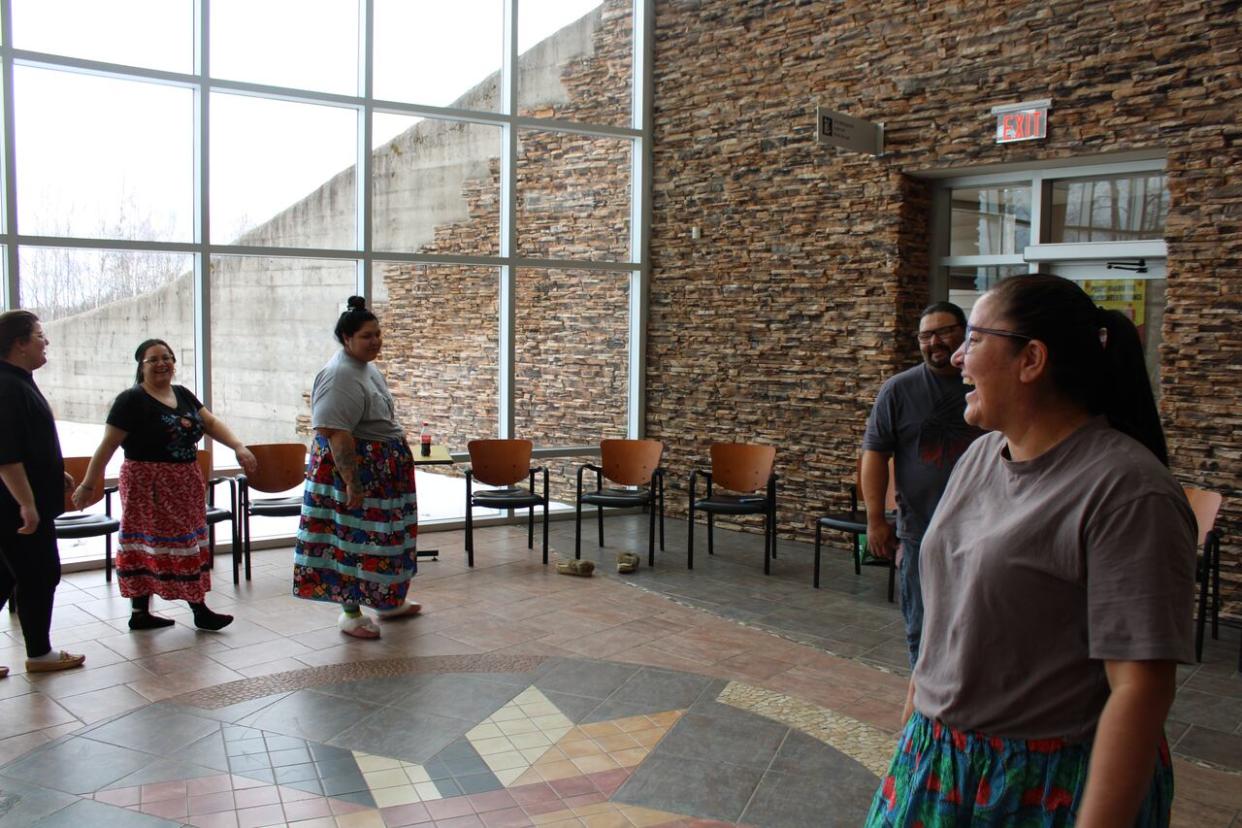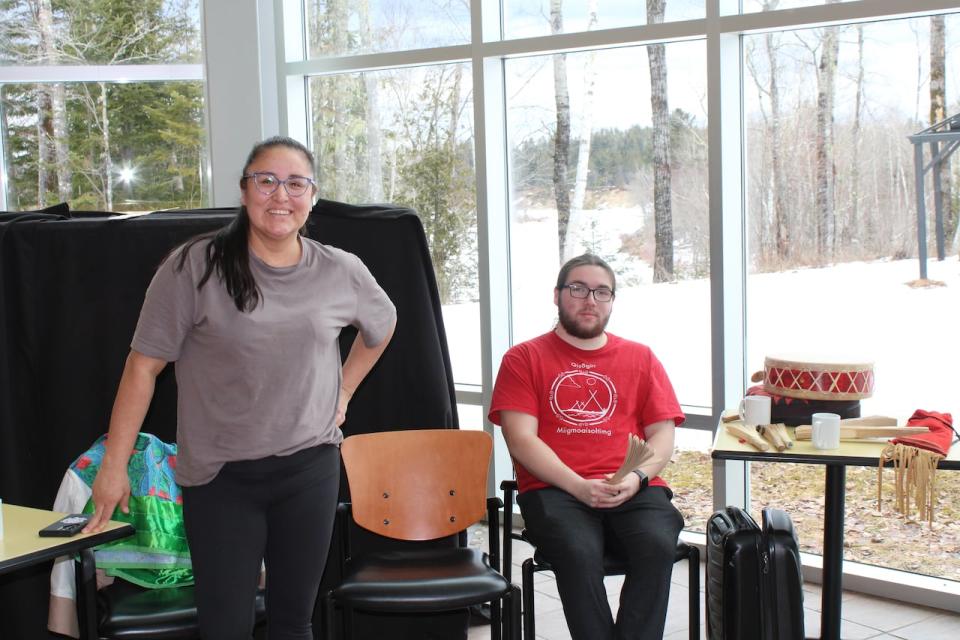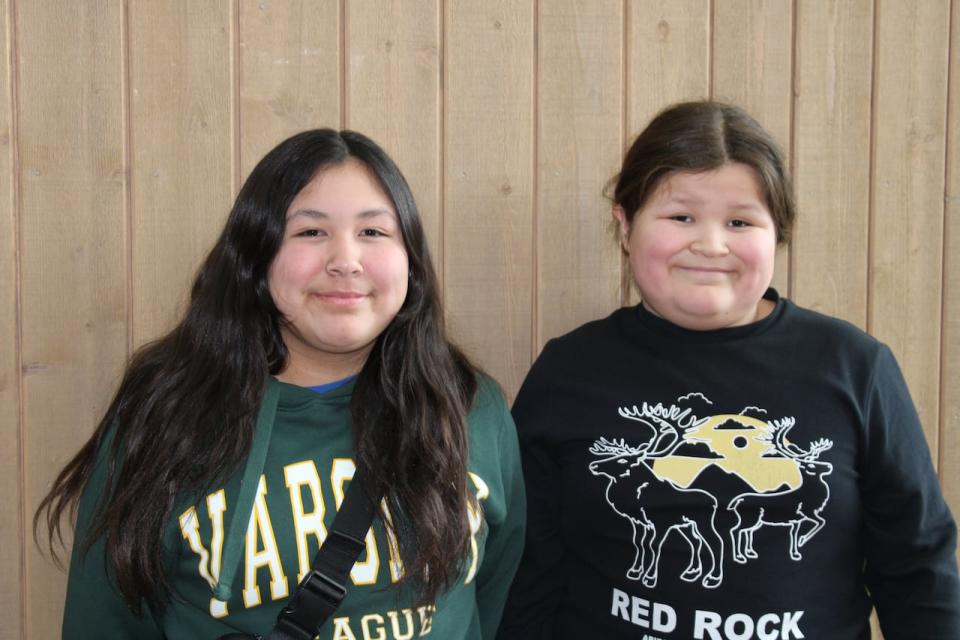Why these Mi'kmaw dancers are teaching others the traditional ko'jua dance

Ashley Sanipass has been dancing ko'jua for over 20 years and now she's passing on her knowledge of the dance to others.
"I always try to teach people about the authentic Mi'kmaw way of life," said Sanipass, who is Mi'kmaw from Indian Island, N.B.
"The dance was important for me to share because I feel like it's a big part of our history."
Sanipass was among a group of dancers and knowledge keepers sharing their knowledge at a workshop at Metepenagiag Mi'kmaq Nation on Friday, about 120 kilometres north of Moncton.
Ko'jua is a traditional Mi'kmaw social dance where dancers stomp three times on each foot before switching feet, all while swinging their arms.
The dance is largely accompanied by a ji'kamqn, a traditional instrument. Liam Watson, who organized the workshop, wants to make sure the next generation learns about it.

Ashley Sanipass, left and Liam Watson helped facilitate the ko'jua workshop. (Oscar Baker III/CBC)
He's spent time learning from old recordings of Chief John Augustine and Solomon Francis.
"We didn't realize that we have our own dances, we have our own songs, so I thought it was really important that our people know what our songs are, know what our dances are, because songs play a very important role in our culture," said Watson, who is from Metepenagiag.
Watson also brought in Michael R. Denny and Frederick Knockwood from Eskasoni First Nation in Nova Scotia for the workshop.
Denny spent time explaining the roots of Mi'kmaw songs and shared how the exact origin of ko'jua is hard to find because language evolves over time but wax cylinder recordings show ko'jua has a long history.
He said it was a social dance that would be celebrated at any gathering, like weddings and socials.
Denny sang some songs while Knockwood and Sanipass walked the participants through the different steps.
Family fun
Shelly Perley and her two of her kids, Samaquon,13, and Xander, 11, travelled from nearby Esgenoôpetitj First Nation to participate.
"I haven't learned about it, so I wanted to teach [my kids] and bring them to learn with me and show them that this is us, and we're learning every step of the way," said Perley.

Samaquon and Xander Perley say their favourite part was hearing the stories of ko'jua. (Oscar Baker III/CBC )
She said the dance was very physical so she enjoyed being able to move like their ancestors. Her kids said they were happy to hear the stories of the songs.
Sanipass said she was glad to see young people taking an interest in traditional teachings.
"I think it's important for our youth to experience this, be proud of where they come from, be proud of their lineage and what their people did," she said.


